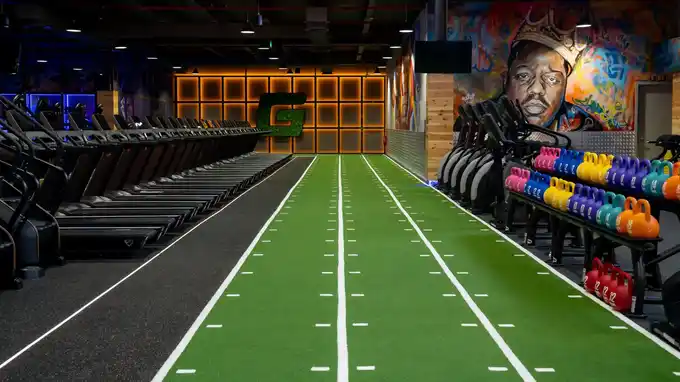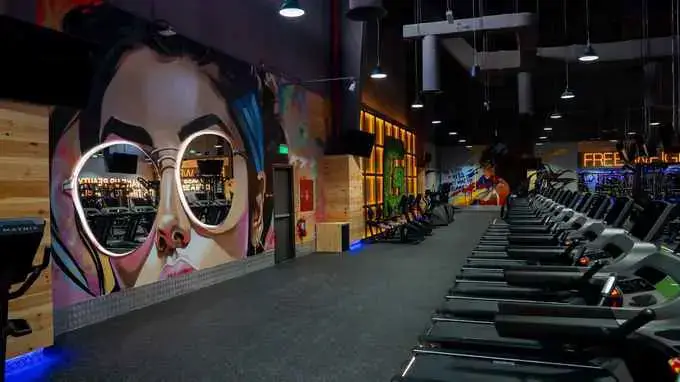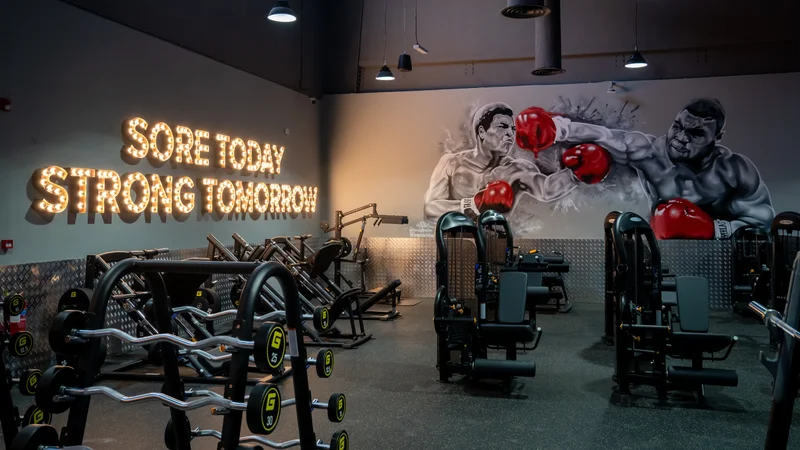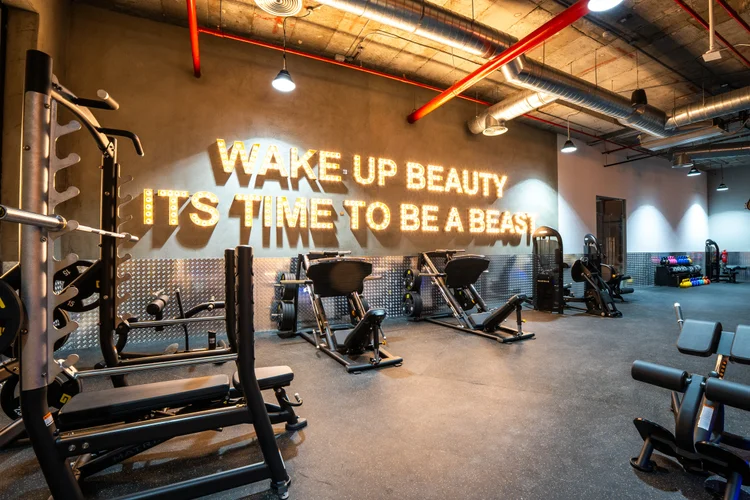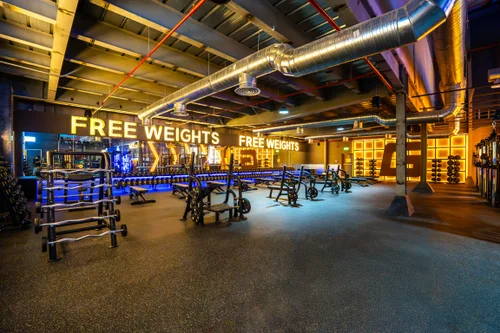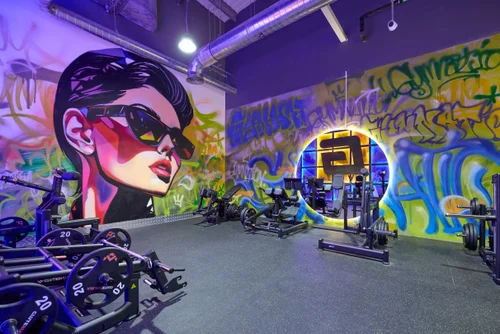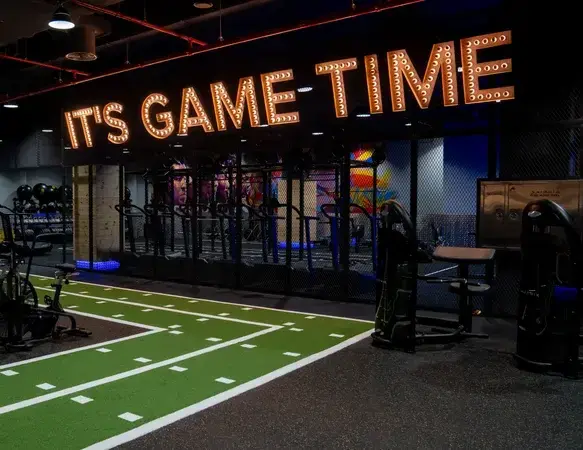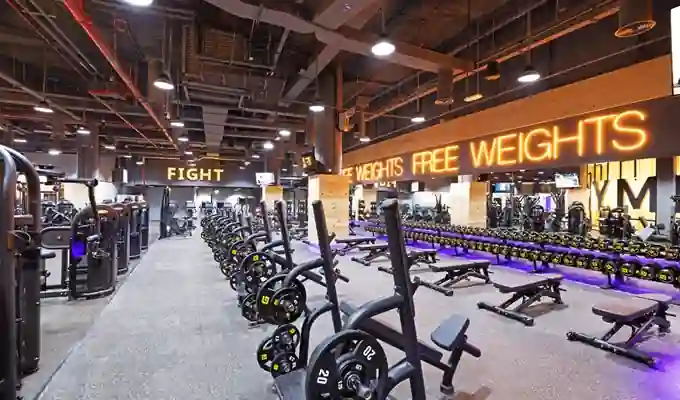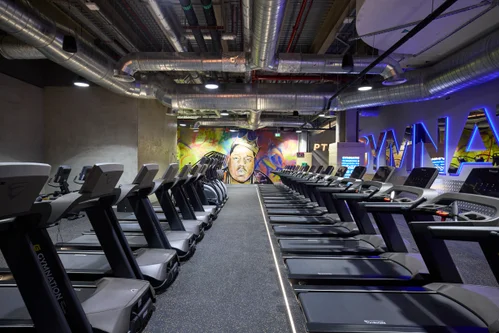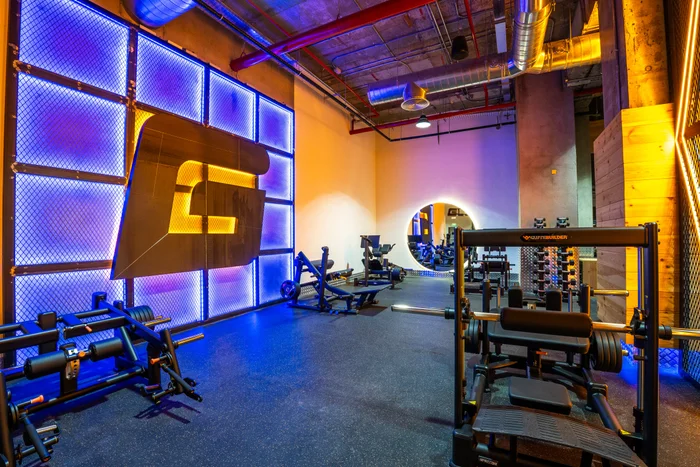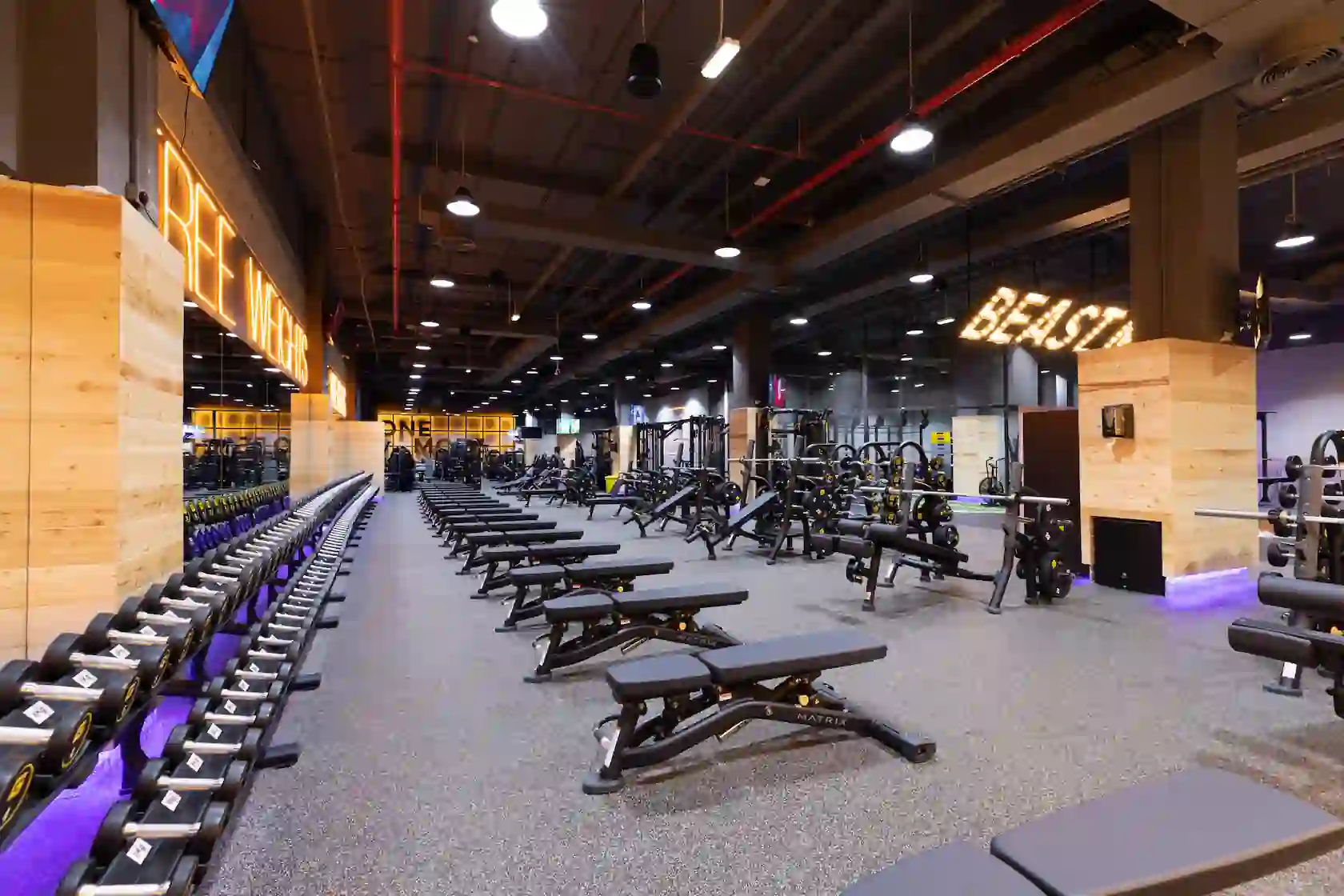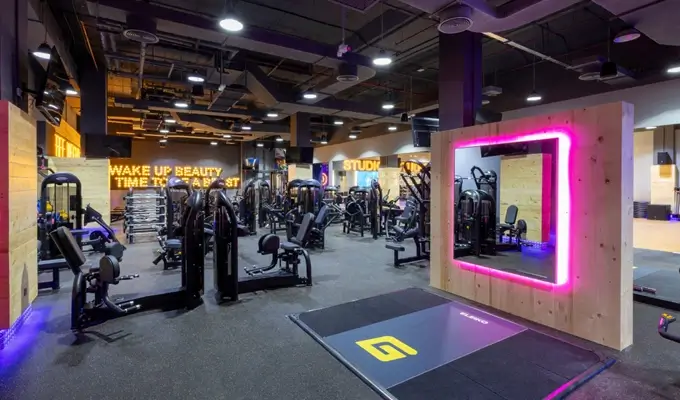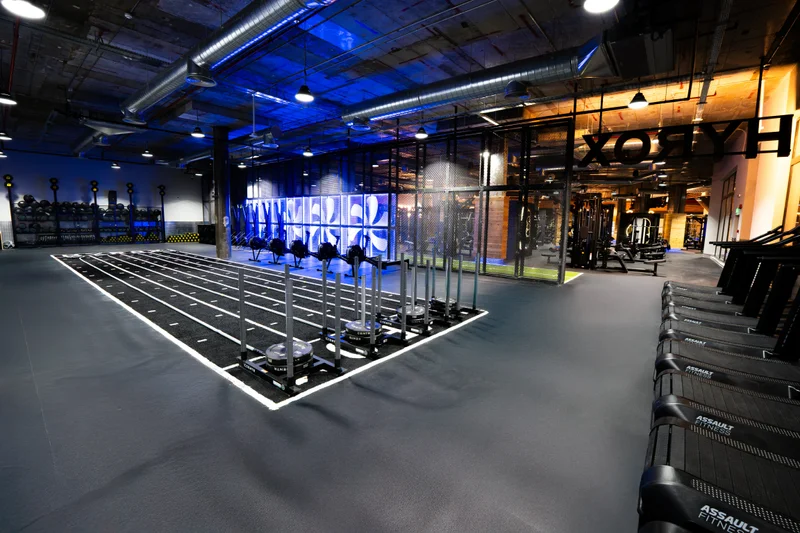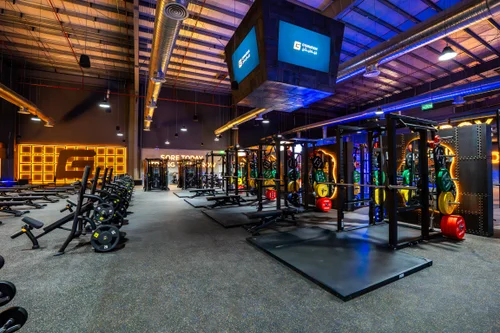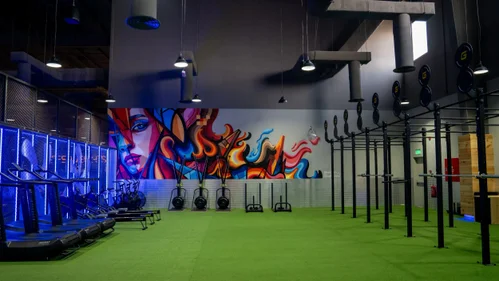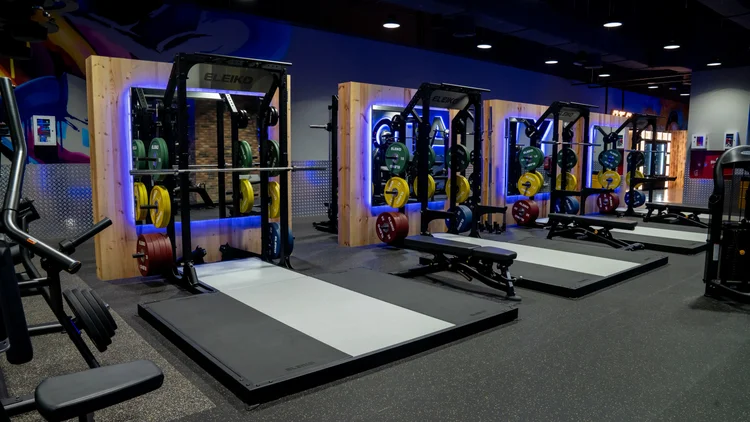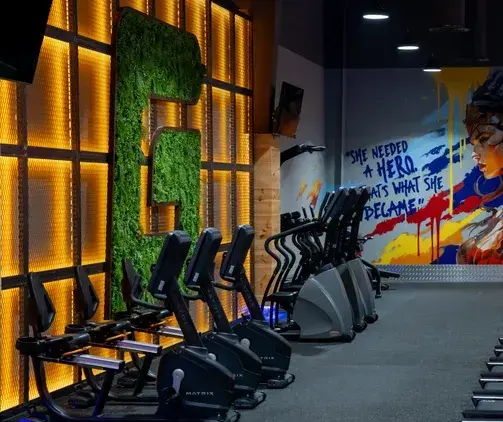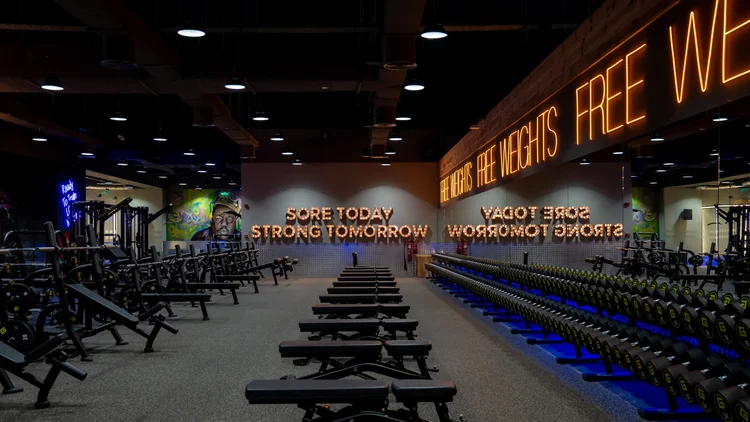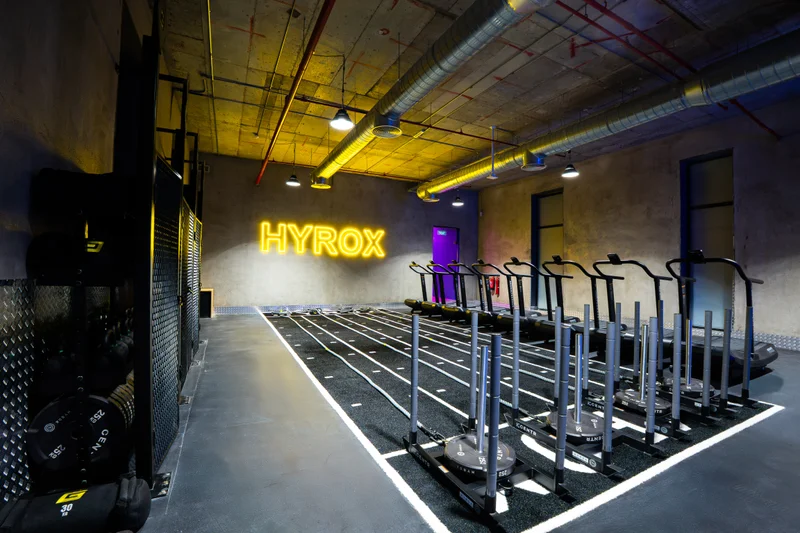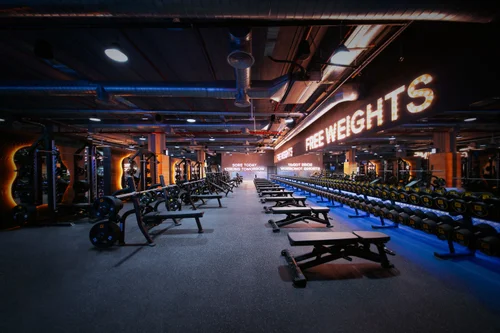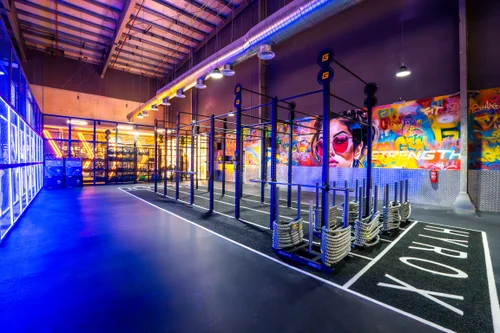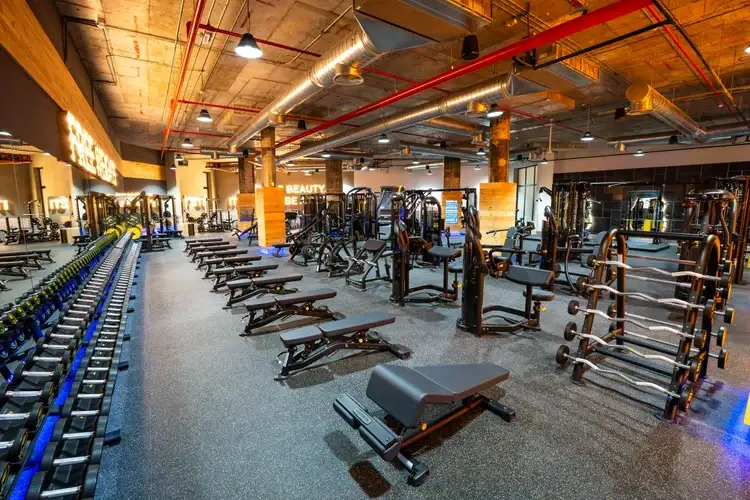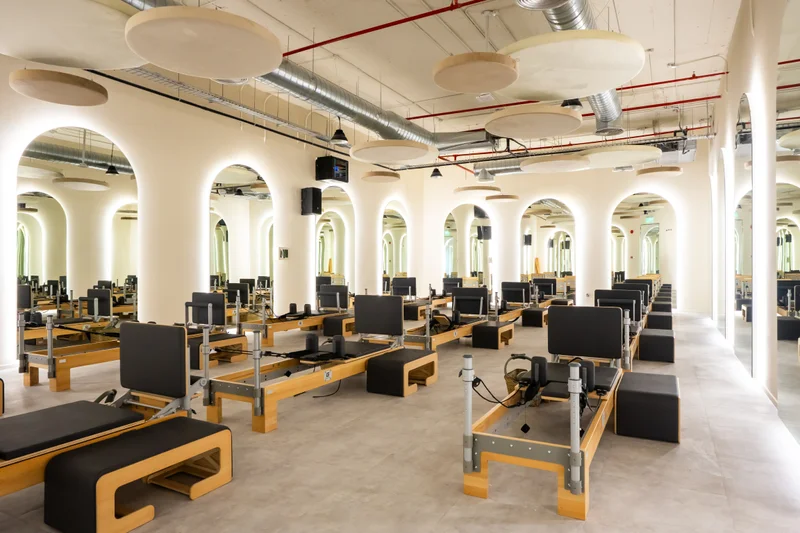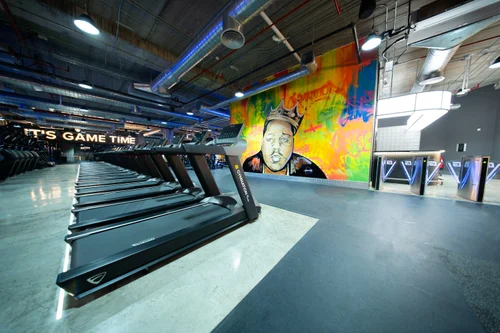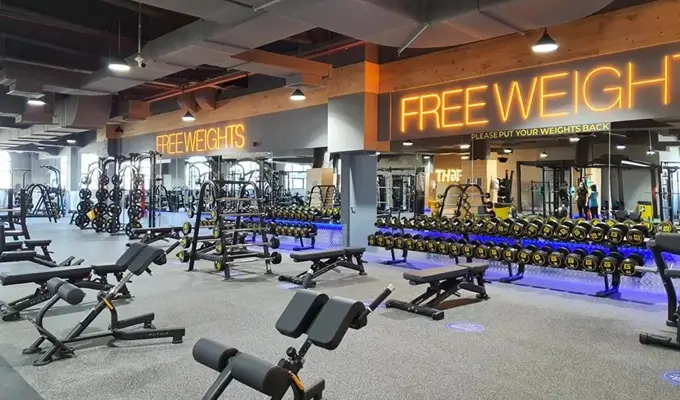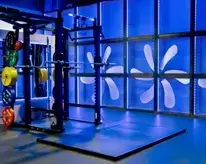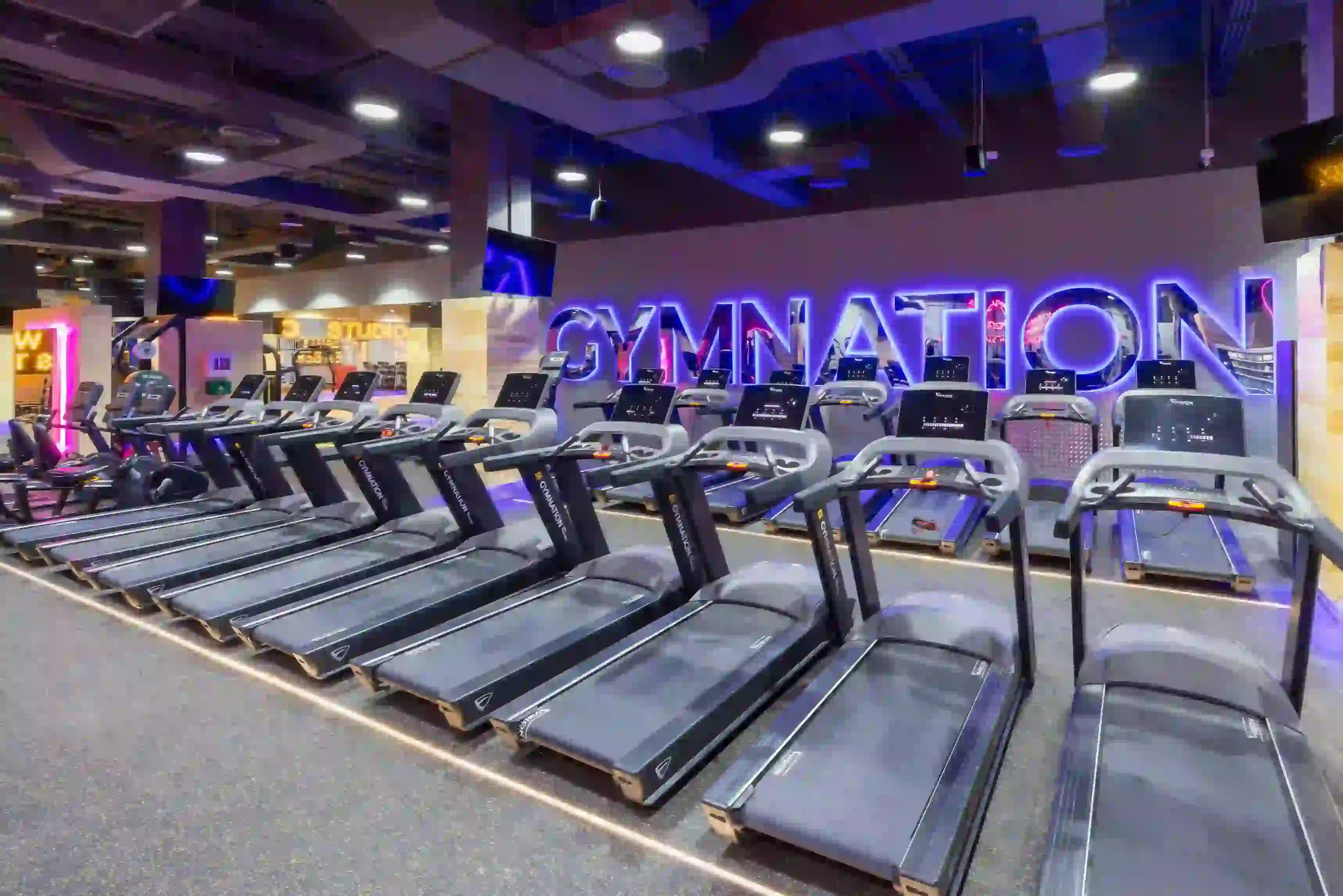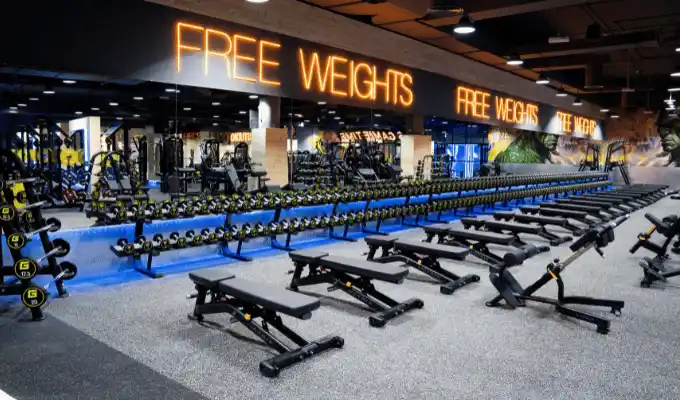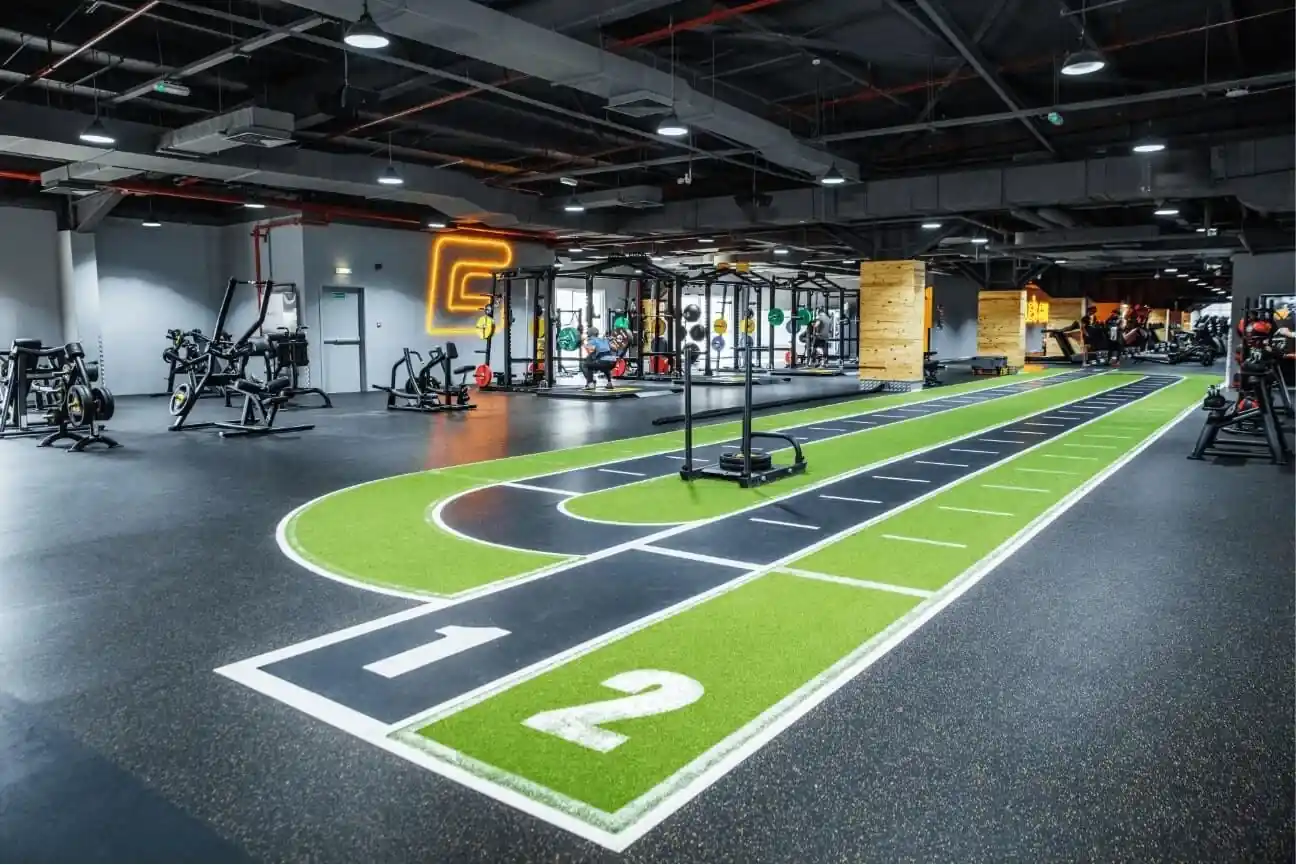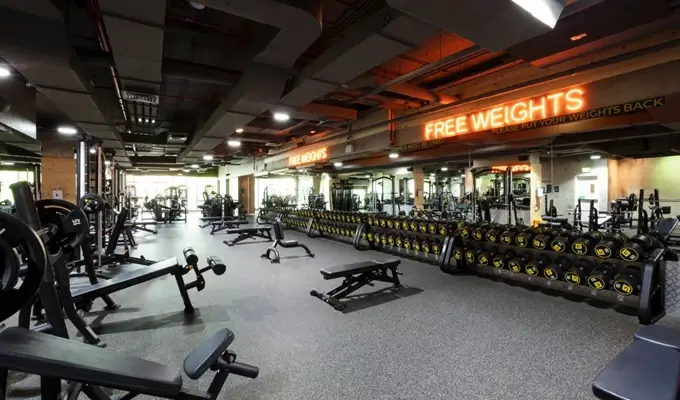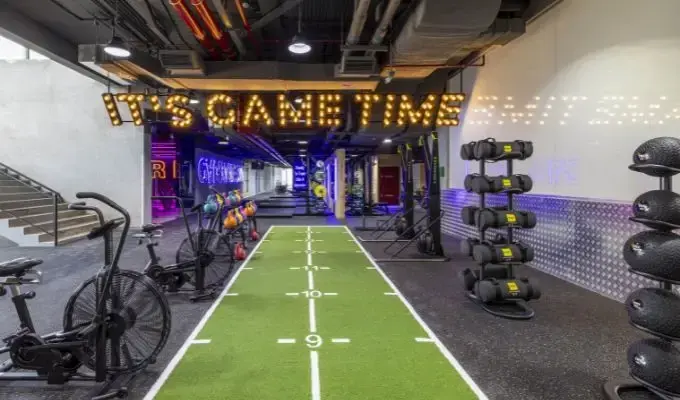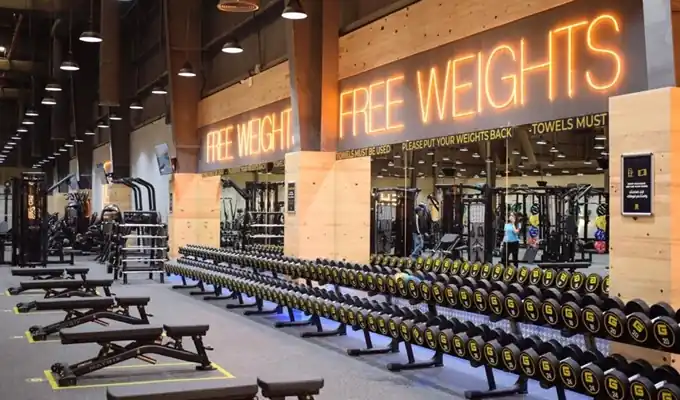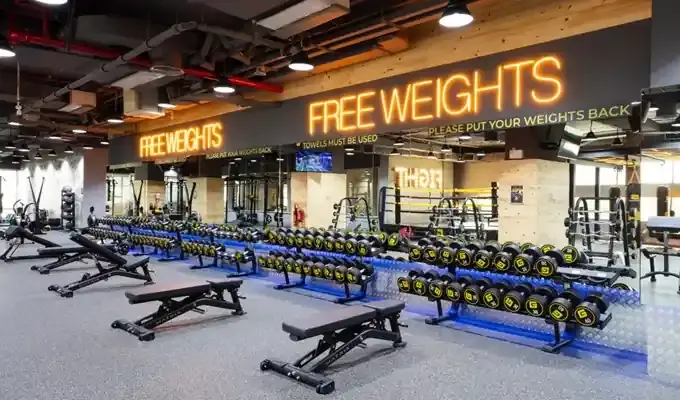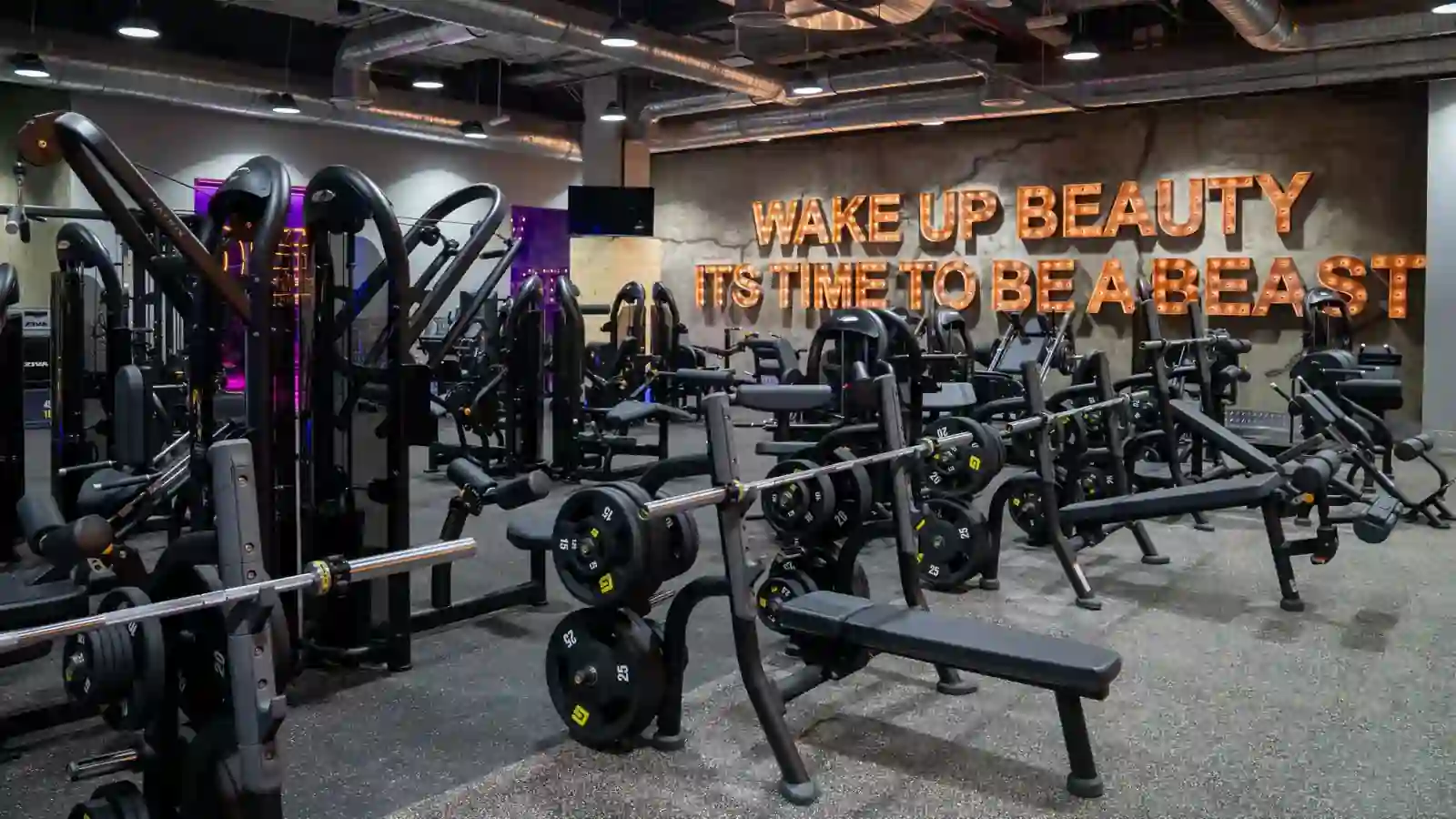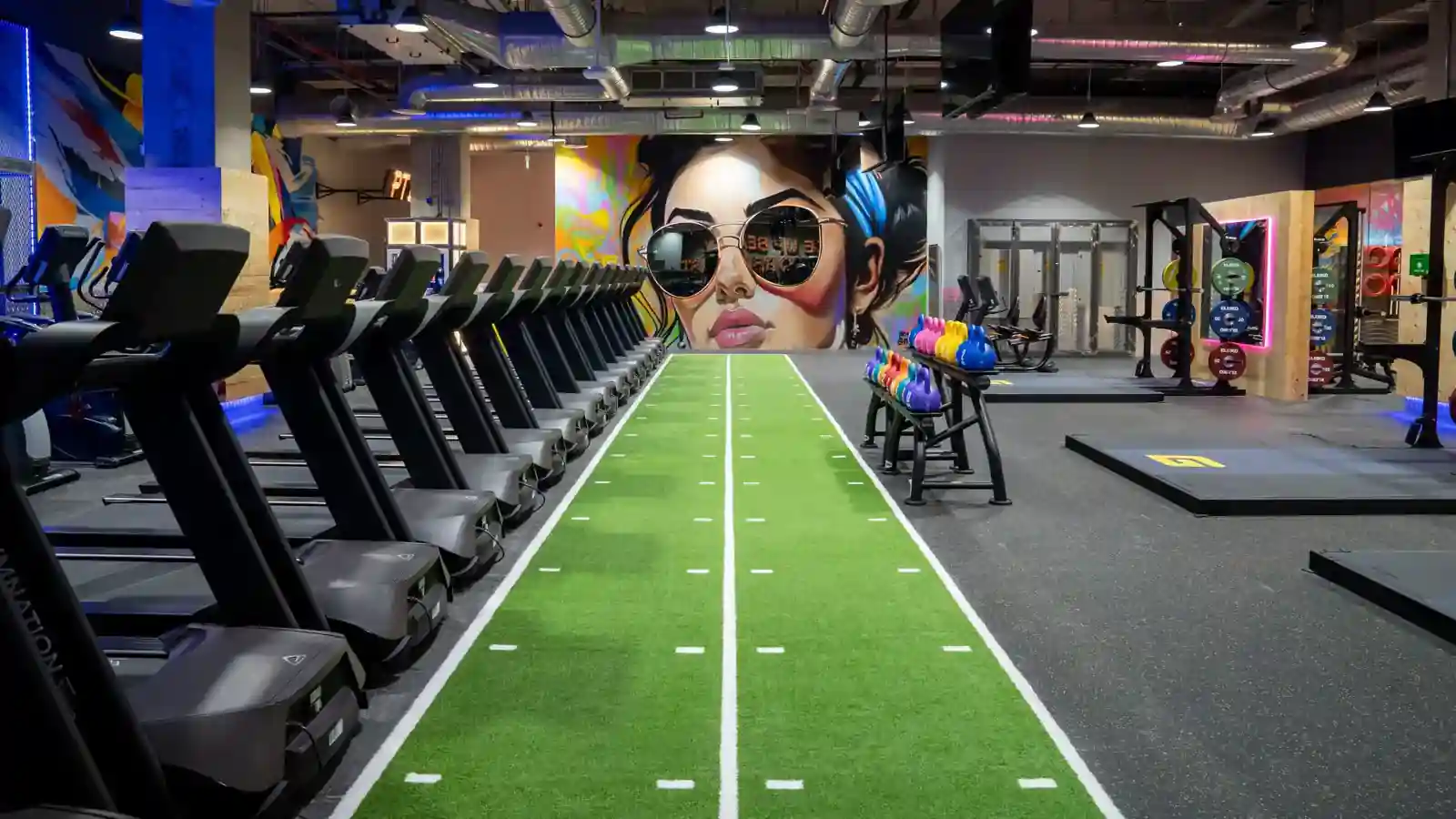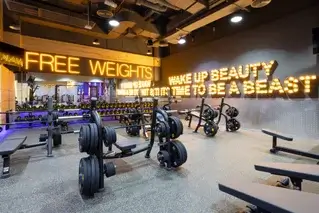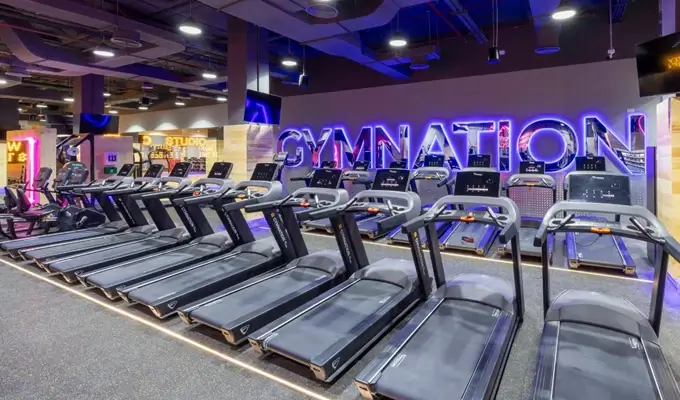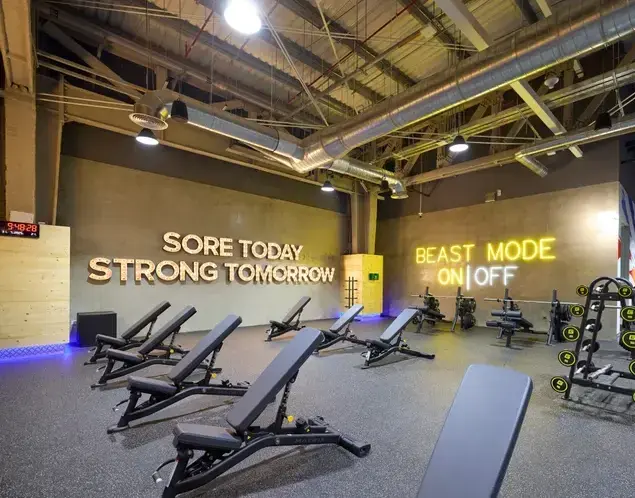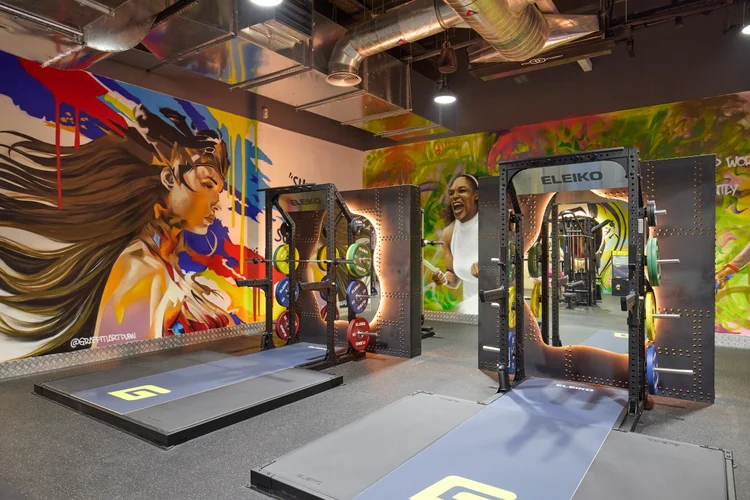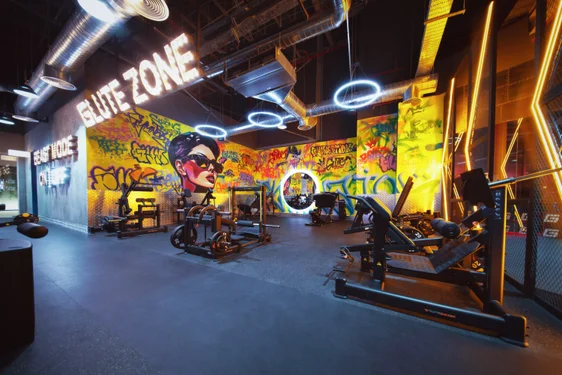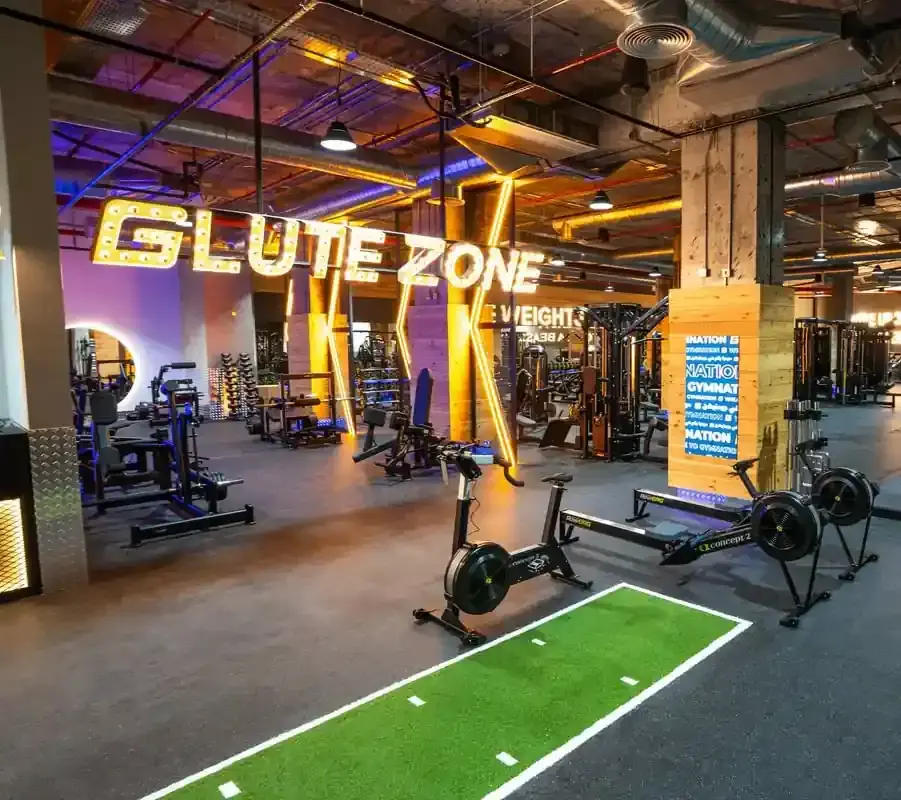Push Pull Legs Workout: UAE Fitness Guide
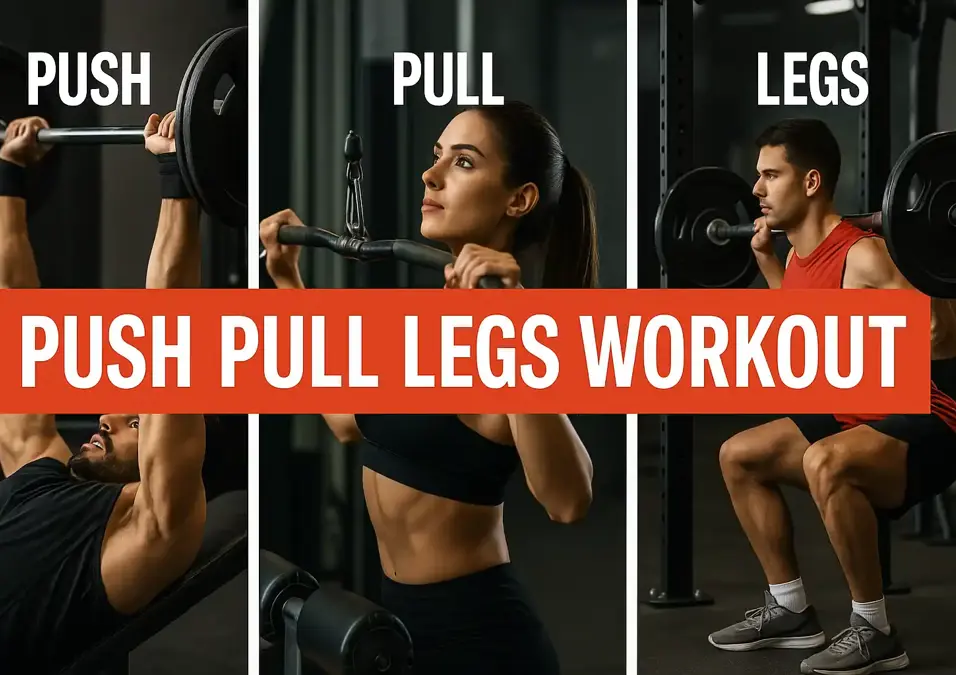
SIGN UP FOR YOUR FREE DAY PASS TODAY!
The push pull legs (PPL) workout splits your training into three days: Push (chest, shoulders, triceps), Pull (back, biceps), and Legs (quads, hamstrings, glutes, calves). The push pull legs program is a complete routine that covers all major muscle groups, including the entire lower body, ensuring balanced and effective strength development.
This efficient routine hits all major muscle groups and is ideal for building strength, muscle, and endurance. Barbell exercises are a key part of the program for maximizing results through compound movements.
In this guide, you’ll learn:
-
What Is a Push Pull Legs Workout?
-
Benefits of the Push Pull Legs Routine
-
PPL vs full-body and bro splits
-
UAE-specific fitness tips and GymNation experts
What Is a Push Pull Legs (PPL) Workout?
A push pull legs (PPL) program splits your training into three structured sessions based on muscle groups and movement patterns:
-
Push day: chest, shoulders, triceps. Check out or latest article: Push Workout
-
Pull day: back, biceps, forearms
-
Leg day: quads, hamstrings, glutes, calves, core
Each day targets related muscles, allowing others to recover. Each session efficiently works multiple muscle groups, making training more effective and balanced.
You can do the PPL program as a 3-day split (e.g. Mon/Wed/Fri) or repeat it over 6 days for more frequency and faster results. The program is flexible and suits beginners and advanced gym-goers alike.
Why Is Push Pull Legs So Popular?
The PPL split is popular because it’s simple, efficient, and highly effective for building muscle and strength.
By training related muscle groups on the same day (e.g. chest, shoulders, triceps on push day), you get better workout flow and muscle activation. It also allows smarter recovery, giving each muscle group 48–72 hours of rest before it’s worked again.
Unlike bro splits, PPL avoids overlapping muscle fatigue and promotes balanced, consistent progress — making it a go-to routine for beginners and pros alike.
How long is your ideal workout?
Benefits of the Push Pull Legs Routine
Adopting a push/pull/legs split offers several key benefits for your fitness progress. It’s not just hype – research and expert experience back up PPL’s effectiveness. Regular exercise routines like PPL are essential for consistent progress and injury prevention. Here are some of the top advantages of a PPL workout routine:
The push pull legs (PPL) split is effective, efficient, and beginner-friendly. Here’s why it works so well:
-
More training frequency = more gains PPL lets you train each muscle group twice a week (e.g. in a 6-day split), leading to faster strength and muscle growth compared to once-a-week routines. This frequency helps develop muscle and strength efficiently.
-
Better recovery, less overlap Grouping related muscles in each session gives others time to rest. This reduces overtraining and improves performance while lowering injury risk.
-
Efficient and flexible PPL works with 3, 4, 5, or 6-day schedules. It fits busy lifestyles and is easy to scale for beginners or advanced lifters.
-
Smarter workouts Exercises naturally flow together (e.g. push day: bench → shoulder press → triceps), saving time and boosting results. Push workouts focus on pushing movements for the upper body, targeting the chest, shoulders, and triceps.
-
Balanced physique Each muscle group gets its own day, including legs—so you train everything evenly and avoid common imbalances.
-
Isolation exercises help refine and target specific muscles, complementing compound movements and enhancing muscle development.
-
More focus, less burnout With fewer muscle groups per session, workouts feel more manageable, keeping motivation high and fatigue low. Optimizing your routine and nutrition leads to the best results.
3-Day Push Pull Legs Split (PPL 3x Per Week)
The 3-day PPL split is ideal for beginners or anyone limited to three gym sessions per week. It gives each muscle group one solid workout weekly—perfect for building a foundation or maintaining progress with a manageable routine. This routine helps develop both upper body pulling muscles and upper body pushing muscles, supporting balanced muscle growth and strength.
A typical schedule would be Push on Monday, Pull on Wednesday, and Legs on Friday. This setup allows rest between sessions and covers all major muscle groups by the end of the week.
It’s easy to stick to, doesn’t demand too much time, and offers plenty of recovery—great if you have a busy schedule. Each workout is focused and mentally easier to commit to.
However, training each muscle just once per week may slow progress after the beginner stage. Studies show that hitting muscle groups 2x per week with moderate volume can lead to faster growth and greater muscle mass. So while it’s an excellent starting point, you may need to increase frequency later to avoid plateaus.
To make the most of a 3-day PPL, focus on heavy compound movements. On Push day, include exercises like bench press, shoulder press, and dips. On Pull day, go for pull-ups, bent over row, rows, and curls to target the upper body pulling muscles and build back thickness. For Legs, hit squats—an essential lift for building lower body strength and mass—along with lunges and deadlifts. Keep the workouts intense, and this split can still drive strong results.
Check more Push Pull Legs Program
Push Workout – Chest, Shoulders & Triceps
| Exercise | Sets | Rep Goal Total | Rest |
|---|---|---|---|
| Barbell Bench Press | 4 | 8–10 | 90–120 sec |
| Seated Dumbbell Shoulder Press | 3 | 10–12 | 60–90 sec |
| Incline Dumbbell Press | 3 | 10–12 | 60–90 sec |
| Dumbbell Lateral Raise | 3 | 12–15 | 45–60 sec |
| Cable Triceps Pushdown | 3 | 12–15 | 45–60 sec |
| Overhead Dumbbell Triceps Extension | 3 | 10–12 | 60 sec |
Pull Workout – Back, Traps & Biceps
| Exercise | Sets | Rep Goal Total | Rest |
|---|---|---|---|
| Pull-Ups or Lat Pulldown | 4 | 8–10 | 90–120 sec |
| Barbell Bent-Over Row | 3 | 8–10 | 90 sec |
| Seated Cable Row | 3 | 10–12 | 60–90 sec |
| Dumbbell Shrugs | 3 | 12–15 | 45–60 sec |
| Dumbbell Bicep Curl | 3 | 10–12 | 60 sec |
| Hammer Curl | 3 | 12–15 | 60 sec |
Leg Workout – Quads, Hamstrings & Calves
| Exercise | Sets | Rep Goal Total | Rest |
|---|---|---|---|
| Barbell Back Squat | 4 | 8–10 | 90–120 sec |
| Romanian Deadlift | 3 | 10–12 | 90 sec |
| Walking Lunges | 3 | 12 reps each leg | 60–90 sec |
| Leg Press | 3 | 12–15 | 60–90 sec |
| Seated Leg Curl | 3 | 12–15 | 60 sec |
| Standing Calf Raise | 4 | 15–20 | 45–60 sec |
4-Day Push Pull Legs Split (PPL 4x Per Week)
You can follow a rotating cycle, doing push, pull, legs, and then repeating the next workout in sequence across four sessions per week. For example:
-
Week 1: Mon – Push, Tue – Pull, Thu – Legs, Sat – Push
-
Week 2: Mon – Pull, Wed – Legs, Fri – Push, Sat – Pull
Another method is a fixed schedule like Push on Mon/Thu, Pull on Tue/Fri, and legs included with one of those days. Just avoid training more than two days in a row without rest to stay recovered and avoid fatigue.
This setup lets you train each muscle around every 5–6 days and gives you three rest days weekly—ideal if you’re balancing cardio, sports, or a hectic lifestyle. Having more rest days can be especially beneficial for recovery and muscle growth, particularly if you train intensely or are an experienced lifter. It’s a sustainable routine that delivers progress without gym burnout.
One downside is the rotating schedule may shift muscle days week to week, so you’ll need to be flexible. But it’s a small trade-off for the benefits of added volume and recovery.
To get the most out of this plan, increase workout volume slightly compared to 3-day or 6-day splits, and avoid back-to-back push/pull sessions. Make sure to progressively increase the weight you use on key lifts like the overhead press and bench press to keep making progress. You can even modify it to include a combined upper day at the end of the week if you want more balance. It’s an adaptable format that works well for many.
Day 1 – Push (Chest, Shoulders & Triceps)
| Exercise | Sets | Rep Goal Total | Rest |
|---|---|---|---|
| Barbell Bench Press | 4 | 8–10 | 90–120 sec |
| Seated Dumbbell Shoulder Press | 3 | 10–12 | 60–90 sec |
| Incline Dumbbell Press | 3 | 10–12 | 60–90 sec |
| Dumbbell Lateral Raise | 3 | 12–15 | 45–60 sec |
| Rope Triceps Pushdown | 3 | 12–15 | 45–60 sec |
Day 2 – Pull (Back, Traps & Biceps)
| Exercise | Sets | Rep Goal Total | Rest |
|---|---|---|---|
| Lat Pulldown or Pull-Ups | 4 | 8–10 | 90–120 sec |
| Barbell or Dumbbell Row | 3 | 8–10 | 90 sec |
| Seated Cable Row | 3 | 10–12 | 60–90 sec |
| Dumbbell Shrugs | 3 | 12–15 | 60 sec |
| Barbell or Dumbbell Curls | 3 | 10–12 | 60 sec |
Day 3 – Legs (Quads, Hamstrings & Calves)
| Exercise | Sets | Rep Goal Total | Rest |
|---|---|---|---|
| Barbell Back Squat | 4 | 8–10 | 90–120 sec |
| Romanian Deadlift | 3 | 10–12 | 90 sec |
| Bulgarian Split Squat | 3 | 10 reps each leg | 60–90 sec |
| Leg Press | 3 | 12–15 | 60 sec |
| Standing Calf Raise | 4 | 15–20 | 45–60 sec |
Day 4 – Repeat Push or Upper Body Focus (Optional Variations)
| Exercise | Sets | Rep Goal Total | Rest |
|---|---|---|---|
| Incline Barbell Press | 3 | 8–10 | 90 sec |
| Arnold Press | 3 | 10–12 | 60–90 sec |
| Dumbbell Chest Fly | 3 | 12–15 | 60 sec |
| Overhead Triceps Extension | 3 | 10–12 | 60 sec |
| Dumbbell Curl + Shoulder Combo | 3 | 12 reps total | 60 sec |
6-Day Push Pull Legs Split (PPL 6x Per Week)
Who it’s for: Advanced and dedicated individuals who want maximum muscle gain and have the time/energy to train almost every day. This is the classic PPL split most often referenced in bodybuilding circles – essentially a two-cycle-per-week routine designed for maximum muscle gains.
Schedule: The standard approach: Push, Pull, Legs, rest, Push, Pull, Legs, rest… over an 8-day cycle, or simply Monday through Saturday training with Sunday off. For example:
-
Mon – Push (Chest/Shoulders/Triceps)
-
Tue – Pull (Back/Biceps)
-
Wed – Legs (Quads/Hams/Glutes/Calves/Quad)
-
Thu – Push (Chest/Shoulders/Triceps again)
-
Fri – Pull (Back/Biceps again)
-
Sat – Legs (again)
-
Sun – Rest
Day 1 – Push A (Chest, Shoulders & Triceps)
| Exercise | Sets | Rep Goal Total | Rest |
|---|---|---|---|
| Barbell Bench Press | 4 | 6–8 | 90–120 sec |
| Seated Dumbbell Shoulder Press | 3 | 8–10 | 90 sec |
| Incline Dumbbell Press | 3 | 10–12 | 60–90 sec |
| Cable Lateral Raises | 3 | 12–15 | 45–60 sec |
| Overhead Cable Triceps Extension | 3 | 12–15 | 45–60 sec |
Day 2 – Pull A (Back, Traps & Biceps)
| Exercise | Sets | Rep Goal Total | Rest |
|---|---|---|---|
| Deadlifts | 4 | 5–6 | 2–3 min |
| Pull-Ups or Lat Pulldown | 3 | 8–10 | 90 sec |
| Seated Cable Row | 3 | 10–12 | 60–90 sec |
| Barbell Shrugs | 3 | 12–15 | 60 sec |
| Dumbbell Curl | 3 | 10–12 | 60 sec |
Day 3 – Legs A (Quads, Hamstrings & Calves)
| Exercise | Sets | Rep Goal Total | Rest |
|---|---|---|---|
| Barbell Back Squat | 4 | 6–8 | 90–120 sec |
| Romanian Deadlift | 3 | 8–10 | 90 sec |
| Walking Lunges | 3 | 10 each leg | 60–90 sec |
| Leg Extension | 3 | 12–15 | 60 sec |
| Standing Calf Raise | 4 | 15–20 | 45–60 sec |
Day 4 – Push B (Chest, Shoulders & Triceps)
| Exercise | Sets | Rep Goal Total | Rest |
|---|---|---|---|
| Incline Barbell Press | 4 | 8–10 | 90–120 sec |
| Arnold Press | 3 | 10–12 | 60–90 sec |
| Chest Dips or Push-Ups | 3 | 12–15 | 60 sec |
| Dumbbell Lateral Raise | 3 | 12–15 | 45–60 sec |
| Triceps Rope Pushdown | 3 | 12–15 | 45–60 sec |
Day 5 – Pull B (Back, Traps & Biceps)
| Exercise | Sets | Rep Goal Total | Rest |
|---|---|---|---|
| Barbell Row | 4 | 8–10 | 90 sec |
| Face Pulls | 3 | 12–15 | 60 sec |
| T-Bar Row or Machine Row | 3 | 10–12 | 60–90 sec |
| Dumbbell Hammer Curl | 3 | 10–12 | 60 sec |
| Reverse Curl | 3 | 12–15 | 60 sec |
Day 6 – Legs B (Quads, Hamstrings & Calves)
| Exercise | Sets | Rep Goal Total | Rest |
|---|---|---|---|
| Front Squats | 4 | 8–10 | 90–120 sec |
| Hip Thrusts | 3 | 10–12 | 60–90 sec |
| Leg Press | 3 | 12–15 | 60–90 sec |
| Lying Leg Curl | 3 | 12–15 | 60 sec |
| Seated Calf Raise | 4 | 15–20 | 45–60 sec |
Day 7 – Rest / Active Recovery
Recommended: Light cardio, yoga, stretching, or complete rest.
This way each category is trained twice in the week, typically with about 2-3 days between identical sessions (e.g. Mon push and Thu push are three days apart). GymNation tip: All our UAE locations are open 24/, so whether you prefer early mornings or late nights, you can stick to your 6-day schedule consistently!
Tip: Treat the 6-day PPL like a pro athlete’s schedule – prioritize recovery. Plan lighter accessory exercises in the second half of the week if you went very heavy in the first half. Also, listen to your body; if you need a rest day mid-week, take it and resume with the next workout. Consistency is key, but so is longevity. Many UAE gym-goers doing 6-day routines incorporate active recovery like yoga or stretching sessions (GymNation offers flexibility and mobility classes) to stay limber and injury-free.
Is Push Pull Legs Good for Beginners?
Yes, beginners can do a push pull legs (PPL) routine — but it’s best to start slow and smart. Here's what to know:
-
Start with 3 days/week: Do Push (Mon), Pull (Wed), Legs (Fri). This allows proper recovery and avoids burnout.
-
Focus on form: Prioritize compound exercises like squats, presses, and rows. Use moderate weights and learn the basics first.
-
Rest is key: Don’t overtrain. Use off-days to recover or do light activity.
-
Get expert help: GymNation offers 1 free personal training session for new members — perfect for learning proper technique.
-
Use beginner-friendly gyms: GymNation’s supportive setup (including ladies-only zones) helps ease “gymtimidation” and boosts motivation.
Start simple, stay consistent, and you’ll progress fast. Every expert was once a beginner — starts your journey with GymNation Now!
Push Pull Legs vs Bro Split: Which Is Better?
The bro split trains one muscle group per day (e.g. chest on Monday, back on Tuesday), while push pull legs (PPL) groups related muscles and can hit each muscle twice a week.
-
PPL offers better training frequency, allowing more consistent muscle stimulation—ideal for natural lifters.
-
Bro splits often cause muscle overlap and long gaps between sessions, which can limit progress and recovery.
-
PPL distributes training volume more efficiently, reducing fatigue and injury risk.
-
While bro splits can work for some, especially advanced users, PPL generally delivers better results in strength and size for most gym-goers.
For optimal gains with balanced recovery, PPL is the smarter, more modern choice.
Push Pull Legs vs Full-Body Workouts: Which Is Better?
Both push pull legs (PPL) and full-body workouts are effective—it depends on your goals and schedule.
-
Full-body workouts are great for beginners or busy schedules. Training 2–4 times per week, you hit all major muscles each session, which boosts early progress and saves time.
-
PPL splits are ideal for intermediate to advanced lifters who want more training days and higher volume per muscle group. They're better for maximizing growth and recovery with focused sessions.
If you’re just starting out, go with full-body. If you can commit to more frequent training and want more muscle definition, PPL may be the better choice. Both can support fat loss when paired with the right diet.
Can You Do Push Pull Legs 6 Times a Week?
Yes, you can follow a push pull legs (PPL) routine 6 times a week—it's a popular format among experienced lifters. This setup trains each muscle group twice weekly, which can boost muscle growth and strength. However, it’s best suited for intermediate to advanced trainees who can manage recovery and workout intensity.
GET YOUR FREE TRIAL TODAY




















